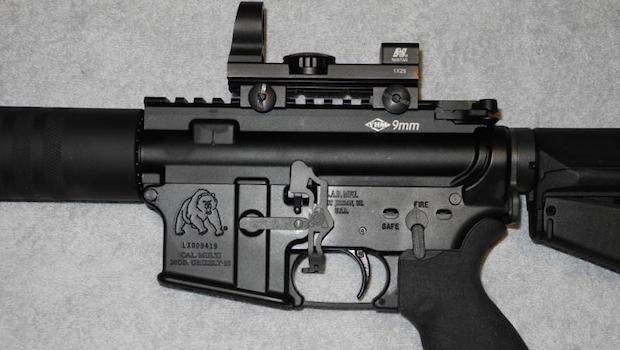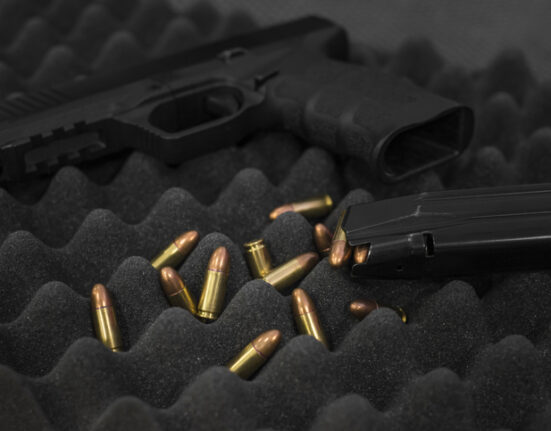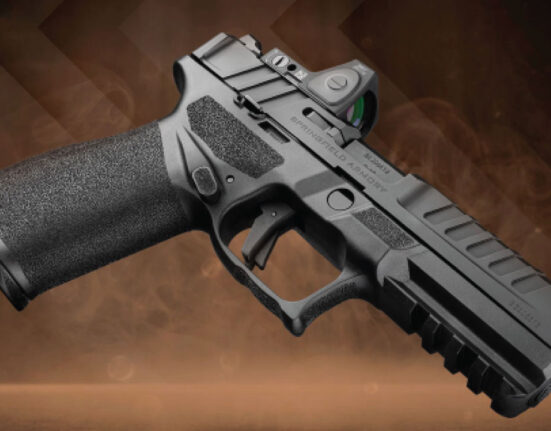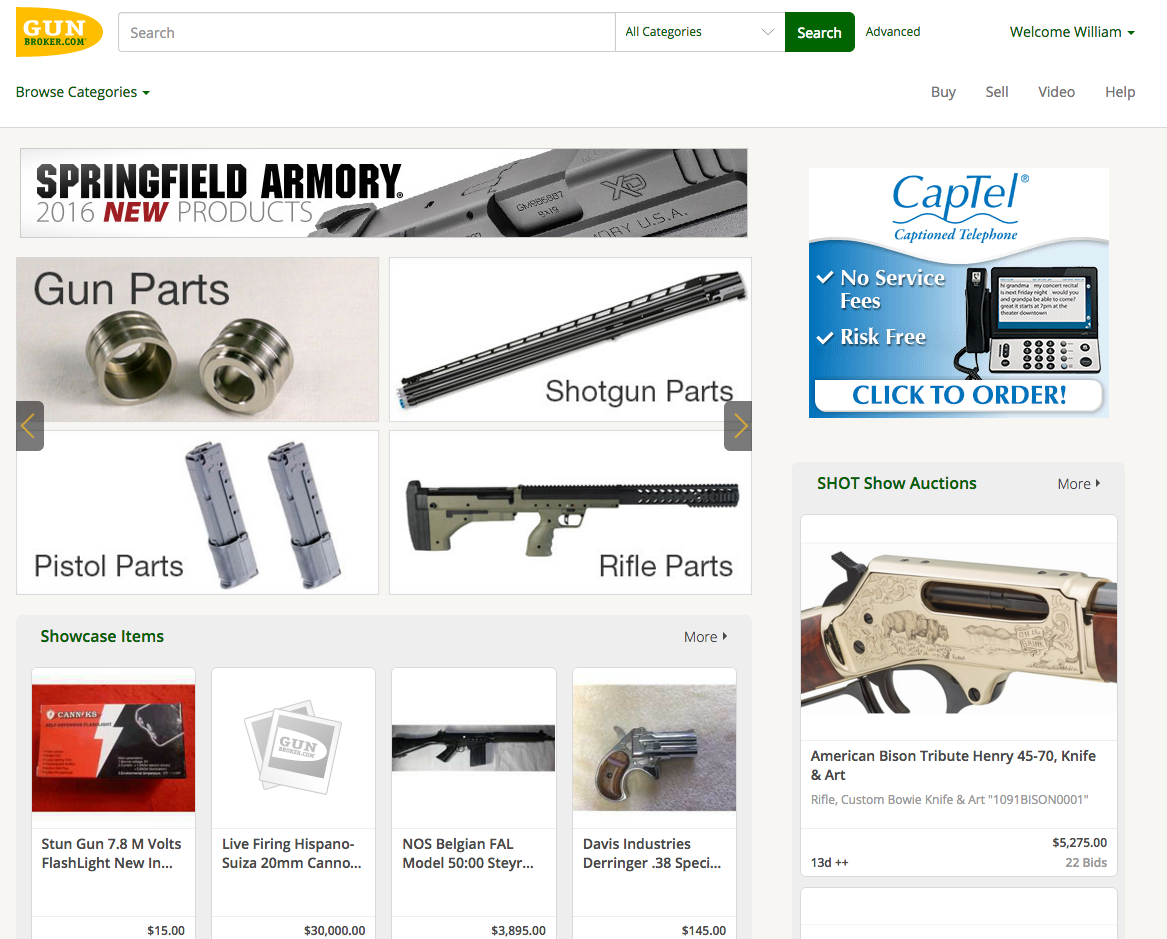The photos you post with your items on GunBroker.com significantly influence the response to your listing, the number of bids on it, and ultimately the final selling price. Ideally of course, you want everyone who views your listings to purchase or bid. Even though photos don’t guarantee response, quality photos will attract attention and answer a lot of questions for potential buyers/bidders. Remember, those answered questions are ones you and your staff won’t have to use valuable time responding to later.
Quality photos can make the buyer excited to own the items themselves. When you have great quality photos with your listings, your buyers will be able to really see what it is they are interested in. This is also why it is important to take many different angles of the items as well. For example, if it is a unique rifle or firearm that has defining features, take a picture of the rifle from the front, from the side and then take a close up that shows the detail. And if a firearm has flaws you describe in your listing, be sure there are supporting photos to show potential buyers exactly what they are buying or bidding on.
When taking close up shots, be sure to check your lighting to make sure that you get details without shadows. Use the macro or super macro setting if you need to. It’s important that the close-ups don’t come out fuzzy or blurred or it defeats the purpose of having taken them. Such photos are actually off-putting to potential buyers because they make them wonder if you’re trying to hide something.
Typical problems that accompany many GunBroker.com auction pictures include:
• Fuzzy detail in the photo
• Inadequate lighting
• Washed out look
• The wrong angles
• Not enough angles of the item (buyers want to see it from all sides as well as close ups of details)
• Bad shadows
• Poor color
• Distracting or unattractive set up or background
These are just a few of the MANY mistakes that are made when people take auction photos of the items they are listing. One of the biggest mistakes is the use of flash in the photos. Using the flash can cause the color to be off as well as making the whole photo looked overexposed and washed out as well as many of the other items in the list above.
Tips for Awesome Shots
Part of getting the perfect photo has to do with making sure you have the right backdrop color and texture, good lighting, and proper item prep.
Clean the items you will be photographing. You can use a lint-free cloth to wipe it down or wash it more thoroughly depending on the item. The camera can show specks of dust and lint or even stains, so you want to be certain that the item looks the best it can before you take the shot.
If the item you’re shooting is dark, make sure that the backdrop is light and that goes for the other way around as well; if the item is light, your background should be dark. This ensures that the camera picks up the contrast between the item and the backdrop.
Simple tables make fine places to take pictures and are easy to cover with backdrops in the right color that complements the product you are taking a picture of. Avoid printed backdrops or backdrops with glitter, shiny material or anything that could take away from the buyer’s focus on your item.
Be sure to know exactly what you want to have in your shot. For GunBroker.com listing photos, you really should try to have only the product in the picture. There is not a need to create a magazine style photo; you just want to be sure that you get the best quality, blur-free photo you can take. However, photograph all of the items a buyer will receive so they’ll know precisely what they are getting. With firearms, this might include extra magazines, cases, holsters, cleaning equipment, slings, bayonets, etc. Especially on used guns, be sure to photograph the box if it’s original to the gun.
Lighting and Flash Dos and Don’ts
One of the most important elements is the right lighting. Every product picture you take needs to be clean and sharp, capture the details of the product, and be properly exposed. Over exposed pictures have way too much light in them and everything can come across like the picture was taken in direct sunlight. Underexposed means that there wasn’t enough light and you will end up with a very dark picture or, in some cases, completely black.
The best lighting for product pictures is natural light so if you have a place you can set up outside, you will be happy with the outcome. There is a specific time of day that occurs two times, morning and evening that is called the “magic hour”. This falls in the first hour of light after sunrise and the last hour of light before sunset. The natural lighting at this time of day will give you a soft, diffused light from the sun being low in the sky. It also eliminates a lot of the contrast and makes losing part of your item in the shadows or in the glare a lot less likely.
There are some methods online that can help you calculate which times of the day are the magic hours for your area. Once you have this set, you will need to be prepared and set up early so you don’t miss any precious magic light. Know exactly what you will be photographing and keep your props and set up simple and easy to change so you can move seamlessly from one photo to another. It will change a bit during the hour so don’t expect the same amount of lighting for all shots, but all of them should come out looking great if you’ve followed the other rules about backdrops and having the item clean and ready to go.
If you’re taking pictures indoors, try to make sure that you let as much natural light as possible in through windows and doors. Don’t use the flash, especially if it is a built in one. If you can’t shut the flash off, you can cover it with a piece of cardboard taped over it carefully. (Don’t get the cardboard in front of the lens in any way or it will show up in your photos.
Since most people don’t have special photography lighting in their homes or shops, you can mimic natural daylight by using what are called “white light” bulbs. The bulbs are specially made give you as close to natural light as possible from an artificial source and will help avoid the harsher lighting and shadows that can show up indoors from average lighting. Regular lighting also has a tendency to look yellow or orange in photos. You may need to adjust the white balance on your camera to match your light sources to get proper color in your photos.
You don’t want to shine any light directly on your products. Doing so can cause glares and reflections that will obscure the details of the item and cause the buyer to not be able to see it clearly. It’s very easy to test this. Just take a few shots and look at them closely for signs of glare, reflections or shadows that take away from the photo. Adjust what you need to, to fix the problem and test it again.
In future issues of FFL Unleashed, we’ll share tips and a product list to assist you in setting up a “mini” studio right at your shop. It’s easy and inexpensive, and can significantly reduce the time spent getting great photos. With the mini-studio always ready to go, you can photograph multiple guns in just a few minutes of well-spent time.
Pulling it All Together for the Perfect Shot
Now that you have everything set up and ready to go and the lighting is right and the time of day is right, you can create excellent, high quality photos of your items to showcase your products in the best way possible. These things will definitely affect the amount of buyers who go on to purchase your items. Even if someone is on the fence about buying a product, looking at excellent quality, clear photos that show all the features and details can be the factor that pushes them over the fence to buy, which is the goal of every GunBroker.com listing.






